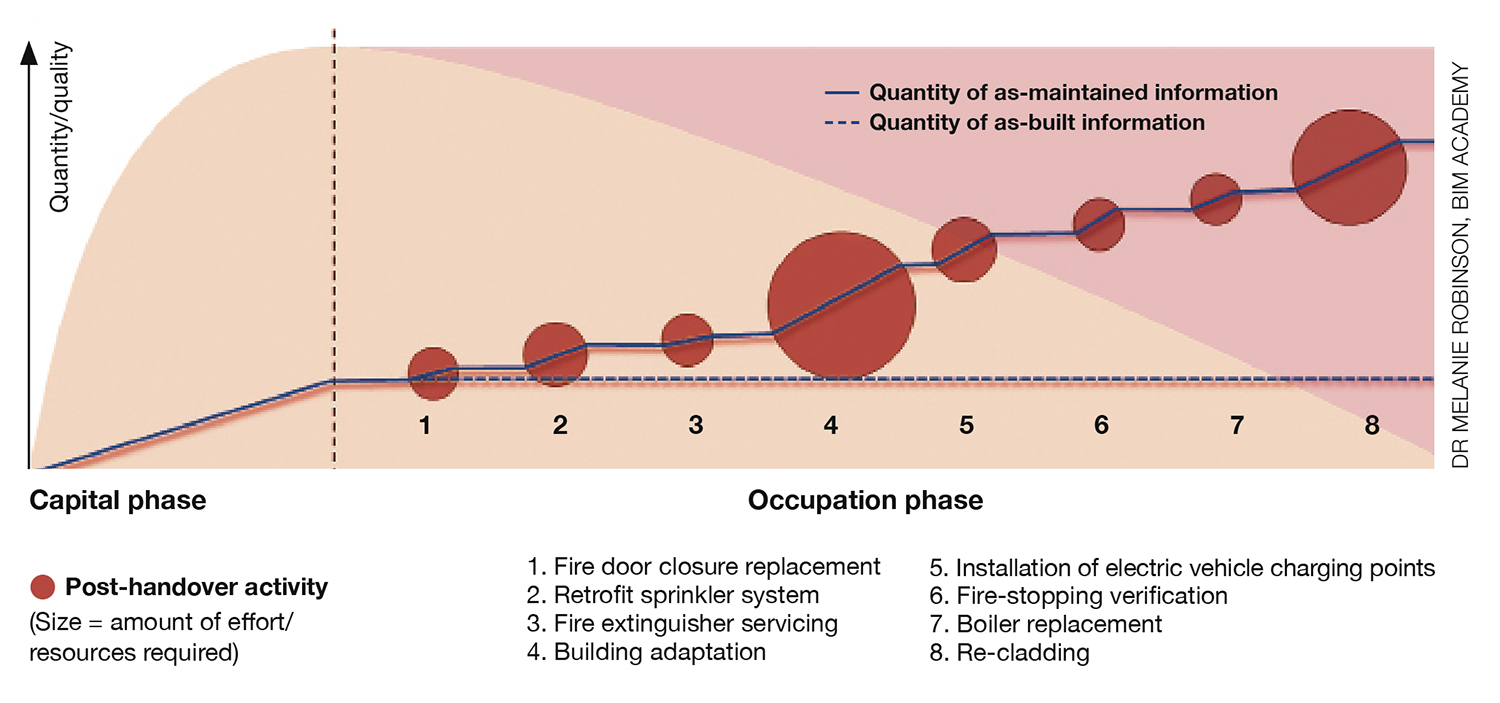
Allan Binns explains how better information management equates to safer buildings and examines the role CDM has to play in keeping residents safe.
In preparation for the Building Safety Act, the safety team at Ryder Architecture has partnered with its digital counterpart at sister company BIM Academy. This unique collaboration between safety and digital primarily exists to support ‘accountable persons’ with the development of building safety cases for their new and existing high-rise residential buildings.
Creating a building safety case, a structured argument why a building is safe for occupation, can be complicated and time-consuming. To help building owners navigate this, Ryder and BIM Academy developed a guide (How to Develop a Building Safety Case: 4 stages to compliance) providing an overview of the steps required to define, gather and maintain the information required.
Format
As a robust argument, a building safety case has to be up to date at all times. This means that every time you make a change to your building – big or small – you will need to update the relevant information. For this reason, a building safety case needs to be editable and, ultimately, digital.
However, not all asset owners are digitally enabled. It is therefore important to consider the minimum viable solution when establishing the information requirements for a building safety case. This is a primary concern of the Building Safety Alliance, defining – at a base level – what information is needed and in what format.
This is understood to be a balancing act. There is a danger in thinking that PDFs – because they are digital – will be sufficient and so, for those of us involved in design and construction, it will be business as usual.
As a universal standard, PDFs work well to communicate as-built information at a set point in time and in an accessible format. However, they are difficult to modify and are therefore not well suited to the needs of a building safety case.
If not maintained, as-built information starts to lose value from the second it is handed over. It is essential that we work with accountable persons at the start of a project to understand their competence and their systems so we can best support their needs.
Particular thought should be given to how residents, and those actively involved in maintaining the building, will input to the building safety case. They have a key role to play, raising safety concerns and documenting routine inspections respectively.
Content
The information to be included in a building safety case depends on the building. Each case will be assessed on its own merits by the Building Safety Regulator. There is no checklist.
The criteria that a case will be assessed against, however, are somewhat clearer. A building will be understood as safe for occupation if the accountable person can demonstrate all reasonable steps to mitigate building safety risks have been taken. In this context, building safety risks are defined as the spread of fire and structural failure.
To support asset owners with their new duties, PAS 8673 (Built Environment – Competence requirements for the management of safety in residential buildings – Specification) sets out a competence framework for the management of safety in residential buildings.
PAS 8673 is not limited to high-rise residential buildings – it is concerned with all residential buildings. In addition, the scope for managing safety is not limited to ‘building safety risks’, but also considers public health and public safety as part of a building owner’s remit.
If we are to properly manage the safety of those residing in residential buildings, we may need to think more holistically about what information is needed.
CDM
Considering the advent of the new principal designer associated with the Building Safety Act, we may question the role the Construction (Design and Management) Regulations 2015 (CDM) have to play in all of this.
CDM principal designers have an overarching duty to plan, manage, monitor and coordinate matters relating to health and safety in the preconstruction phase.
By way of a crude summary, this means overseeing the design process and ensuring the designers working on the project – those people who are preparing and modifying designs – are complying with Regulation 9 of the CDM Regulations 2015.
The value of as-built versus as-maintained information

Regulation 9 requires them to take into account the general principles of prevention, and any preconstruction information, to eliminate foreseeable risks from the project – so far as reasonably practicable.
The role is not just concerned with the design phase and how potential buildability issues may affect construction – it also engages with occupation, with a specific focus on cleaning and maintenance.
The information required to support occupation is provided in the health and safety file. In accordance with Appendix 4 of L153 (CDM Regulations 2015), a health and safety file should contain information regarding residual risks, key structural principles, hazardous materials used, the removal or dismantling of installed plant and equipment, cleaning or maintaining the structure, the nature, location and markings of significant services and means of safe access/egress.
Considering the broad church of safety concerns set out by PAS 8673, it is foreseeable that the majority of the information required for a health and safety file will also be needed to develop a building safety case. With this notable overlap, CDM will have to evolve – not just to have the right people for the right job at the right time, but to ensure that they also have the right information in the right format.
Better information management
When asking designers to demonstrate compliance against Regulation 9, CDM principal designers are often greeted with a designer’s risk assessment (DRA), telling them – in one long breath – what the hazard is, what the risk is, who is at risk, what the likelihood of it happening is, what the consequence would be and how they’re going to mitigate it.
This approach circumvents the meaningful conversations we should be having about design risk management, presenting design decisions as an open-and-shut case and reducing the process to something purely bureaucratic.
The inconsistent format in which design risk information is shared is also problematic. DRAs come in many forms – mostly as PDFs, others favouring a qualitative approach. Seldom are two alike. This lack of consistency makes the information difficult to collate, hampering a CDM principal designer’s ability to plan, manage and monitor the process.
None of this is the designer’s fault. Unless CDM principal designers establish clear information requirements – the information needed and the format – this issue will persist.
Beyond the toilsome nature of this process, the concern is that this inconsistent and uneditable information will ultimately end up forming part of the golden thread – potentially undermining its integrity.
It is therefore crucial that CDM consultants start playing a more central role in the development of building information management execution plans. This means setting out clear expectations and information requirements to ensure that the information received is in a consistent, editable format – ready to support a building safety case.
Allan Binns is safety director at Ryder Architecture, APS regional representative for the England Central region and executive of the Building Safety Alliance












